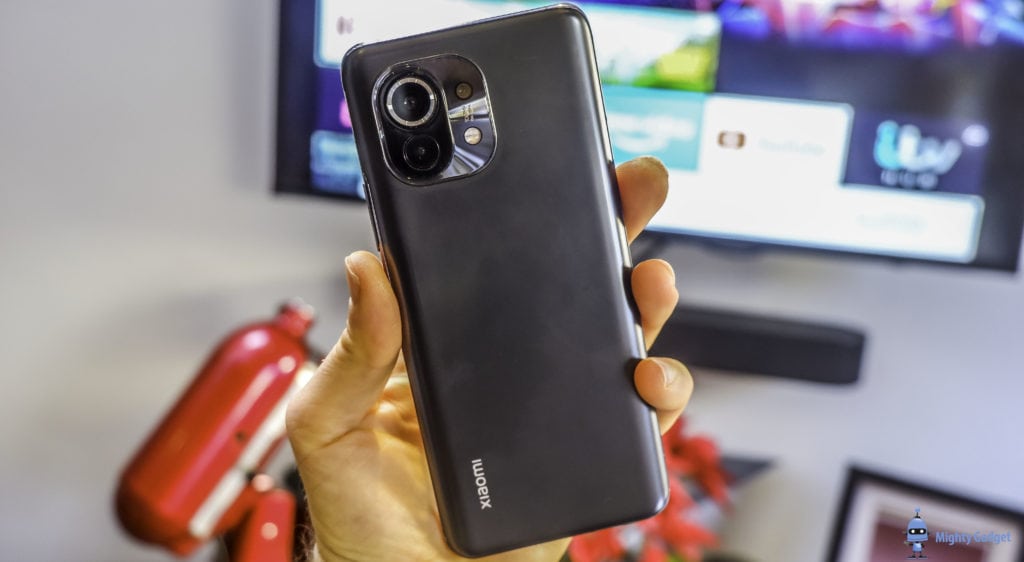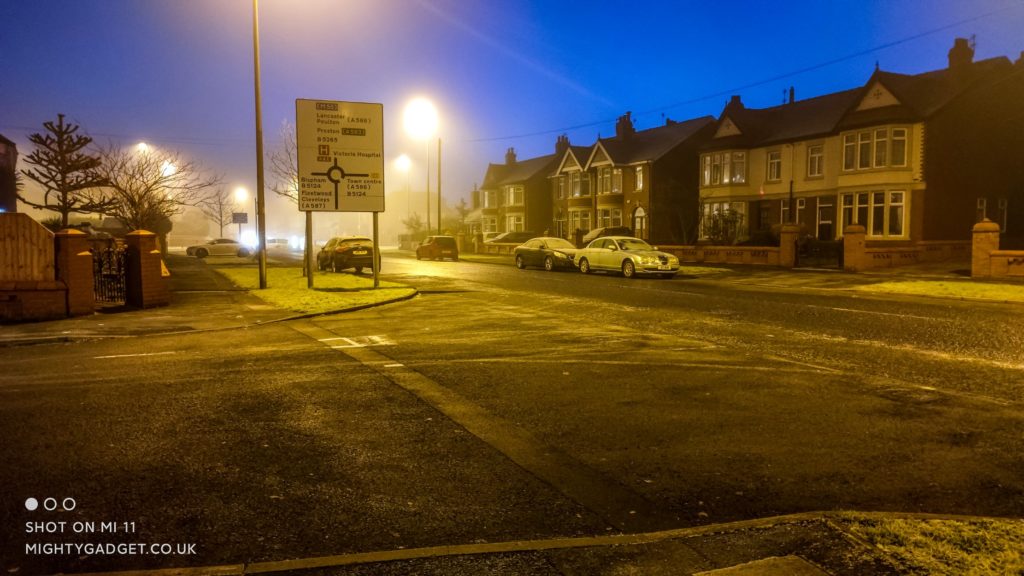Announced on the 28th of December, the Xiaomi Mi 11 beat the Samsung Galaxy S21 to be the first phone featuring the latest Qualcomm Snapdragon 888 chipset.
The launch was limited to China, and there has been no word on the Pro model yet. Eager to try out Qualcomm’s latest flagship chipset, I opted to import the phone from China.
While the launch price is officially CNY 3,999 (£450) the grey import price is closer to £600.
Chinese Import – What works, what doesn’t
This is the second phone I have imported from Giztop; the last one was the Redmi K30 Ultra. With the Redmi, while the phone itself was amazing, but it had various limitations due to being an import. Band 8 for 4G/LTE was missing, one of the more important 4G bands, Google Pay didn’t work at all, and it lacked Widevine support. Then, because the Redmi K30 Ultra was never released globally, it never got a global ROM.
With this, a lot of those issues are not there. Most of the LTE bands are there, including band 8 (but not 32, used by Vodafone and Three). It passes Widevine L1 allowing me to get HD on Netflix (not 4K though).
As for Google Pay, it should work, Google Pay downloads and I can register everything as well as select HCE wallet and Google Pay. However, I have only been to the shops once, and when I tried it, it failed, but I think this was user error.
The Xiaomi Mi 11 ships without a charger in the main box, however, my sample came with a separate Xiaomi charger.
Xiaomi M1 11 vs Mi 10 vs Mi 10T Pro Specification – Has much changed?

The Xiaomi M1 11 has only been launched in China so far; the launch price was CNY 3,999 (£450) which matches the launch price of the Xiaomi Mi 10 5G last year.
The Xiaomi Mi 10 5G then went on to launch in the UK for £725, so you can expect the same sort of price when the M1 11 launched (hopefully).
The Xiaomi Mi 10T Pro didn’t launch that long ago, and it arrived at a superb price of £599.99 RRP, it was almost the same spec as the Mi10, but the display was swapped from AMOLED to LCD with a bump in refresh rate.
While Samsung has downgraded certain aspects of the Galaxy S21, Xiaomi has at least upgraded several bits, but many people may not feel like it is enough of an upgrade.
The display is now bigger at 6.8-inches and a higher resolution at 3200×1440 with an improved refresh rate of 120Hz.
Assuming the Mi 11 launches at around £725, I think it is worth the extra £125 over the Mi 10T Pro, the faster chipset and significantly improved display easily justify this.
Edit – You can get the Xiaomi Mi 10T Pro for £549.99 on Amazon sold by Amazon, or £499 sold by Xiaomi Mobile Shop (not an official Xiaomi company). A £200 difference makes the Mi 11 a little harder to justify
Display and Design
At 6.81 inches this sounds like it will be unwieldy, but I have grown to like larger screens. Compared to the Mi 10 you are only gaining 2mm in height, and it is 0.5mm narrower. It is both smaller and lighter than the Xiaomi Mi 10T Pro which has much larger bezels.
I did find that the super-narrow bezels on the bottom of the screen sometimes causes me to miss navigation buttons, but you get used it.
Like many other AMOLED based phones, the display curves into the sides of the phone giving you fully edge to edge. Aesthetically it looks fantastic, some people are not so fond of the practical aspects of it, but I don’t find it an issue.
The display itself is beautiful and responsive, I run this at its full resolution with 120Hz, with both of these having an impact on battery life. Within the display settings, there is an option for MEMC, which adds frames into videos for smoother play, with the full resolution, this setting is not possible.
The camera bump is massive but doesn’t seem as big as the Mi 10T Pro. With the included case attached, it sits flush with the main camera module, but the 108MP sensor still pops out a little, so could be prone to damage.
The 20MP punch-hole selfie is on the left giving you plenty of notification bar space.
The overall appearance and build quality of the phone is on par with a phone that cost considerably more. The cheapest S21, which costs more than this, has a plastic back with a flat display.

Biometrics
Like all AMOLED phones now, this has the fingerprint scanner under the display, and you can then enable face unlock. Both are good, the fingerprint scanner seems accurate with a quick unlock time.
The face unlock is generally much faster, all I need to do is lift my phone, and it almost immediately unlocks. With it only using a selfie camera and no ToF, some may moan about security, but I am not too concerned by this.
Camera
My camera tests have been somewhat limited due to the combination of lockdown and dreadful weather. I will expand the photo gallery, the more I use the phone.
The main camera on this is the same 108MP Samsung sensor we saw on the Mi 10 and Xiaomi Mi 10T Pro, this is then combined with a generic 13MP ultrawide and a 5MP macro.
The macro is OK, you need to manually switch to macro mode, and due to the nature of this lens it can be hard to focus in on an object, but when it works, it works well.
The ultra-wide is good, not great, like many phones
The main camera is then the star of the show; the sensor is well established now, it may not be regarded as the best sensor on the market, but it is up there.
Video is generally good too, I was particularly impressed with the stabilisation the camera achieved on a very windy day on walking down the coast.
Photo Samples
Video Sample
Performance

I have done a more thorough post with the benchmarks of the Snapdragon 888 vs Snapdragon 865.
As you would expect for a flagship device, the overall performance is exceptional, everything on the phone runs without issue. The combination of the 120Hz display and SD888 makes everything incredibly responsive.
I am not a massive gamer, but I do love a bit of COD. I think the large 6.8-inch display made a greater impression on me for this than the SD888
During gaming, the phone does warm up quite a bit, and the Antutu results indicate a larger increase in temperatures compared to last years flagship phones.
The temperature increase is double the temperature the Realme X50 Pro, but negligibly more than the Dimensity 1000+ on the Redmi K30 Pro. We will have to wait for other phones to launch to see if this is a trait of the SD888 or just the Xiaomi.
Synthetic benchmarks offer some impressive numbers, but also numbers that are not big enough to justify upgrading from last years phone.
There is a 17% difference in the Antutu result compared to the Realme X50 Pro with the Snapdragon 865. While the CPU result on this test looks a little disappointing with just a 6% difference overall, things look better on Geekbench, which shows a 25% difference on the single-core or 15% on multi.

Similar numbers with gaming benchmarks, you are looking at 15% difference vs the SD865, but this goes up to a 49% advantage with the new Wild Life benchmark.

Testing Battery drain and thermals
I decided to retest the phone as I finalised this review, just to confirm the numbers. This led me to do a full post covering the thermals and battery drain of the Snapdragon 888 vs SD865 and Kirin 999. However as a quick recap of that post.

Testing the Xiaomi M11 with the 3DMark Wild Life stress test at both full resolution and the lower 2400×1080, the phone would increase in temperature by over 20°C with the scores the phone received dropping by around 8% indicating thermal throttling. This would also cause the battery to drain by around 15% (absolute number, not relative).
In comparison, the Realme X50 Pro (Snapdragon 865) maintained almost perfect consistency with its results with the temperature only increasing by 13°C and a 9% absolute drop from 93% to 84%.
However, the lowest result the Xiaomi achieved while being throttled was still 30% higher than the best result of the Realme.
I am reasonably sure that these issues can and will be reduced in forthcoming firmware fixes. It may result in lower peak performance but it would improve battery and fix throttling issues.
Battery

So we know that the phone has issues while gaming, but for day to day use I have found the battery to be fine, but not great
For my real-life usage that easily goes beyond a day of light to moderate usage, subjectively, it seems to perform better than the Realme X50 Pro which I have used on an off recently. I would often top up the Realme towards the end of the day, but haven’t with the Xiaomi. Working from home has caused my usage patterns to change, so this could be a factor.
Synthetic benchmarks, confirm the less than amazing results. I wouldn’t say its bad, but the aforementioned X50 Pro is the last flagship phone I have tested to achieve sub 10 hours, but it did score more than the Realme, which is perhaps not what you may have expected following the poor performance with the Wild Life stress test.
Software
I won’t dwell on the software too much, because I am on a Chinese ROM. MIUI is pretty good though, it could be better, but I wouldn’t say it is any worse than the other Chinese brands I use regularly.
With it being on a Chinese ROM, I did switch to Nova Launcher, which cut back on some of the built-in Chinese bits of language.
Connectivity Wi-Fi and 5G
Due to travel restrictions and no 5G where I am, I am unable to test the 5G, but will do as soon as possible.
For Wi-Fi, there is an upgrade compared to the SD865; you can now connect at 160Mhz, allowing connections at 2400Mbps vs 1200Mbps. Wi-Fi throughput with the Netgear RAX120 was improved compared to the SD865 on the Realme X50 Pro, but failed to compete with the Huawei P40 Pro, which managed to break through gigabit speeds.
Price and Alternative Options
| Preview | Product | Price | |
|---|---|---|---|
 |
Samsung Galaxy S21 5G Smartphone SIM Free Android Mobile… | £769.00 | Buy on Amazon |
 |
Xiaomi Mi 10T Pro 16.9 cm (6.67″) 8 GB 256 GB Dual SIM 5G… | £499.00 | Buy on Amazon |
 |
Xiaomi Mi 10 8GB/128GB Twilight Grey(UK VERSION) | £670.06 | Buy on Amazon |
The Xiaomi Mi 11 hasn’t launched in western markets yet, I bought mine from Giztop for around £600
The Samsung Galaxy S21 is the only other flagship phone to launch in 2021, which starts at £769. Until the Xiaomi gets a UK launch, most people will be better off with this, it runs the global software with a proper warranty and an excellent pre-order bonus.
The Xiaomi Mi 10T Pro is a superb choice at and currently £499 on Amazon. While it has an LCD display which I generally dislike, this is one of the best I have used. Apart from the display, I doubt most people would notice a difference in performance, and the battery will last longer.
The Xiaomi Mi 10 is currently £670, so probably not worth it, but it has been as low as £525 from Amazon back in December, and at that price I’d certainly buy it.
Overall
Subjectively, I really like the Xiaomi M1 11, it is a superb phone that ticks a lot of boxes for me, I have just enjoyed using it.
However, thermals and battery life are a concern. I wouldn’t say the battery gave me too many issues, but in the past couple of years I have been impressed with the direction phones are moving in battery performance. This seems like a step back. I suspect some firmware tweaks could address some of these issues.
It perhaps doesn’t have the wow factor that you may want from a flagship phone, the camera is essentially the same, and chipsets are so good now I doubt many would notice the performance difference between the SD888 & SD865.
The display has seen quite a significant upgrade from last year it looks fantastic and is extremely responsive. I’d say this is the stand out feature compared to last years models.
Overall, the Xiaomi Mi 11 has set the standard for flagships in 2021 so far. However, with no UK launch date yet the Samsung Galaxy S21 is the most affordable option at the moment, and if you buy it during the pre-order period, the gifts you get make it a very attractive option.
Hopefully, the Mi 11 will get announced soon, and I hope that will also come with the Pro model, which should offer the wow factor we hope for when investing in a flagship phone.
Posted by Mighty Gadget Blog: UK Technology News and Reviews

























